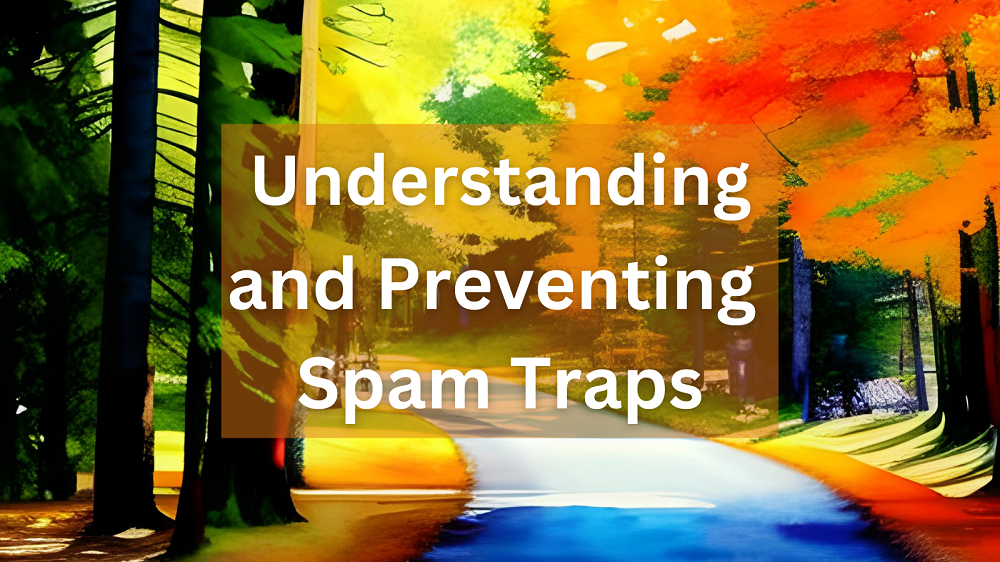For marketing professionals, building and maintaining a healthy email list is vital for successful email marketing campaigns. However, one common threat that can jeopardize your efforts is the dreaded spam trap. Spam traps are designed to catch and penalize senders who engage in poor list hygiene or adopt unethical practices. Occasionally, well meaning marketers will hit spam traps and require help to resolve an issues. Understanding them will help you address and recover should you find your email program in hot water. In this blog post, we will delve into three major types of spam traps – Typo traps, Recycled traps, and Pristine traps – and provide actionable tips on how to avoid them, ensuring your email marketing campaigns remain effective and legitimate.
Typo Spam Traps:
Typo traps, also known as pristine traps or pristine spam traps, are email addresses intentionally created to capture typos made by senders during the subscription process. These traps typically consist of commonly misspelled email domains or variations of popular email services.
The purpose of typo traps is to identify senders who engage in email address harvesting or utilize outdated email lists. ISPs (Internet Service Providers) and spam filter providers monitor the occurrence of typo traps to differentiate legitimate senders from spammers.
Prevention Tips:
- Implement Double Opt-In: By employing a double opt-in process, you can ensure that subscribers confirm their email addresses before being added to your list. This reduces the chances of typos and inadvertently subscribing to typo traps.
- Use Email Validation Services: Consider using email validation services to detect and correct misspelled email addresses before they enter your system. These services can help you identify potential typos and minimize the risk of falling into typo traps.
Recycled Spam Traps:
Recycled traps, also known as repurposed traps or reactivated traps, are email addresses that were once legitimate but have been abandoned by their owners. After a period of inactivity, ISPs convert these inactive accounts into spam traps to catch senders who continue to send emails to outdated or purchased lists.
Recycled traps are especially challenging because they can be present in supposedly “clean” email lists, making it difficult to identify them without proper list hygiene practices.
Prevention Tips:
- Regular List Cleaning: Regularly remove inactive subscribers from your email list to minimize the chances of hitting recycled traps. Pay attention to subscribers who haven’t engaged with your emails for a considerable period and consider re-engagement campaigns to gauge their interest.
- Consider the date of consent: Depending on the country, our recipients are in, email consent may expire over time. Being aware of these requirements can also help keep your list healthy and avoid any unintentional legal issues for mailing to people past their consent expiry.
Pristine Spam Traps:
Pristine traps, also known as spam honey pots, are email addresses created exclusively to identify spammers. These traps are never used for any legitimate purpose, ensuring that any email sent to them is considered unsolicited.
Unlike typo traps or recycled traps, pristine traps are not the result of user error or inactivity. They are strategically placed on websites, forums, or public sources that are likely to attract email harvesters and spammers.
Prevention Tips:
- List Source Validation: Be cautious of the sources from which you obtain email addresses. Avoid purchasing email lists or acquiring them from questionable sources, as they often contain pristine traps.
- Implement Double Opt-In: By employing a double opt-in process, you can ensure that subscribers confirm their email addresses before being added to your list. This reduces the chances of typos and inadvertently subscribing to typo traps.
- Maintain Good List Hygiene: Regularly clean your email list by removing inactive subscribers, monitoring bounce rates, and handling spam complaints promptly. By maintaining a healthy list, you reduce the chances of pristine traps infiltrating your email campaigns.
Even the best of plans can go sideways with a simple mistake, bad data upload, bad suppression, or a malfunctioning script. Being aware of the types of traps and being prepared to take corrective action. By adopting these preventive measures and staying up-to-date with evolving anti-spam practices, you can build a strong foundation for successful and ethical email marketing campaigns.
It is essential to be aware of the various types of spam traps that can hinder your email marketing efforts. By understanding the nature of typo traps, recycled traps, and pristine traps, and implementing effective prevention strategies, you can safeguard your reputation as a legitimate sender and maximize the success of your email marketing campaigns.
Remember, maintaining a clean and engaged email list through regular list cleaning, double opt-in processes, and providing valuable content will not only helps protect you from spam traps but also ensure that your emails reach the intended recipients who are genuinely interested in your offerings.


